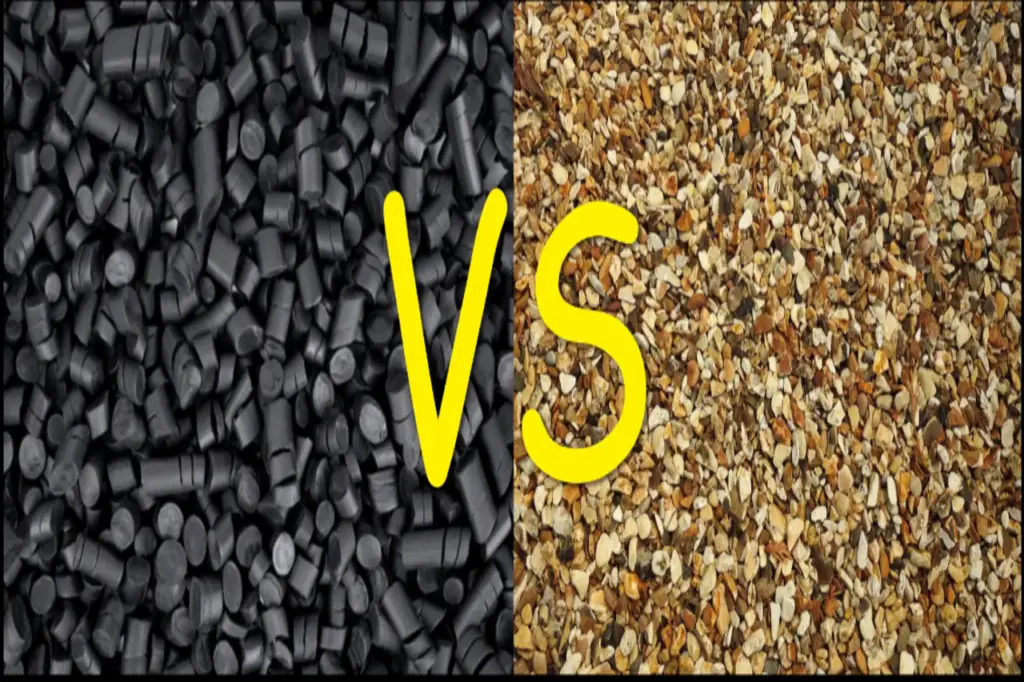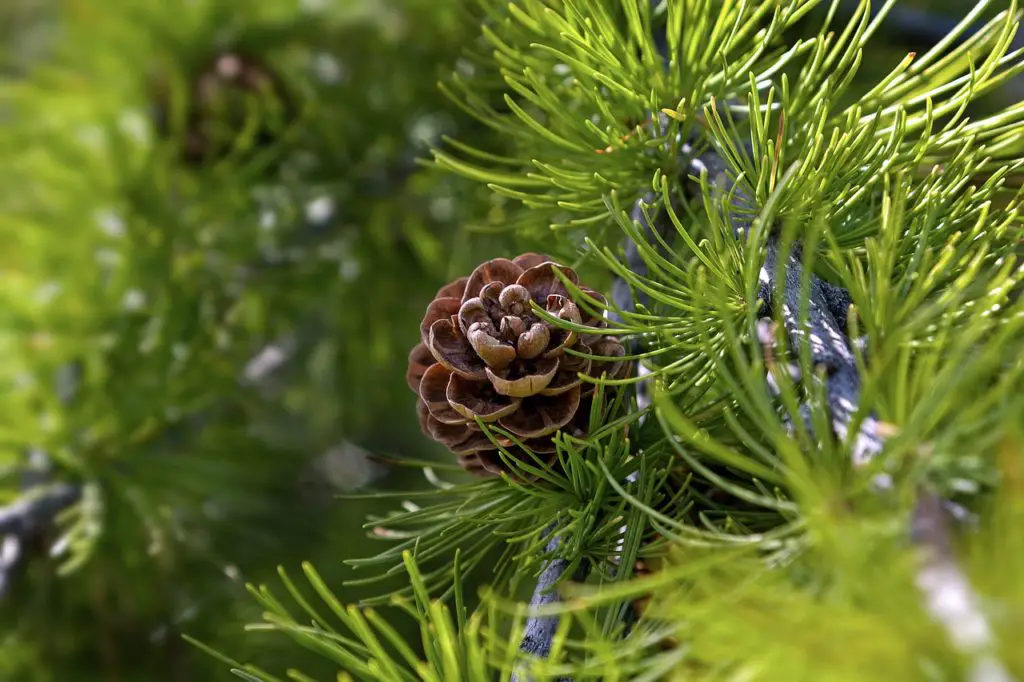Are you considering rubber mulch or pea gravel as a landscaping or playground surfacing option? When landscaping or constructing a playground, you have to make multiple decisions.
How do you know which one is best for you? You want the outcome to withstand regular use, be effective, and be safe without hurting your finances.
So, is there a difference between rubber mulch and pea gravel?
Yes, there are differences between rubber mulch and pea gravel. Pea gravel is heavy and has a limited selection of natural colors like beige, blue-gray, and red-brown compared to rubber mulch. Also, manufacturers use different dyes on it to create mulch of different beautiful colors.
We explain different aspects of rubber mulch and pea gravel below:
Rubber Mulch vs. Pea Gravel
The primary role of surfacing material is to provide protection and safety, especially for children. The debate about whether rubber mulch or pea gravel is a better option is a never-ending one.
Therefore, to make an informed decision between the two, we need to evaluate their different attributes.
What is Rubber Mulch?
Rubber mulch comes from recycled tires. Manufacturing the rubber mulch involves cleaning the tires and grinding them uniformly.
In addition, there is the removal of wires or other unwanted fiber from the rubber.
What’s more? The rubber gets color treatment to ensure that the color doesn’t rub off over time. Also, different color coatings are added to create colorful and fun designs.
Some of the aspects about rubber mulch you need to look into include:
- Visual Aesthetics: In as much as rubber mulch doesn’t appear natural compared to wood mulch, it has earth colors. Therefore, choose from the different colors to match the swing set, landscape, and décor.
- Maintenance: It’s low-maintenance, which explains the high initial cost. Unlike other mulch options, you don’t need to replace rubber mulch annually. Furthermore, it’s easy to lay and needs minimal raking to remove debris and keep it evenly distributed.
- Cost: Its initial cost is higher than sand, pea gravel, wood mulch, or grass. Even so, the cost is higher, it requires less maintenance and holds its value for longer.
- Safety: Rubber mulch offers the best shock absorption compared to other landscaping materials. 6 inches of rubber mulch protects you from falls of up to 12 feet. That said, there’s a potential for displacement. Hence, high-traffic areas need consistent monitoring to ensure enough coverage.
What is Pea Gravel?
Pea gravel has small stones with a smooth surface. The pea-sized stones range between 1/8 -3/8 inches. Also, depending on where you source them, they come in various colors such as white, gray, rusty brown, or translucent.
After constant use, pea gravel naturally compresses, forming a non-shock absorbing, hard surface that can lead to head and bone injury.
Some aspects you need to understand about pea gravel include:
- Visual Aesthetic: Because of its composition of small stones, pea gravel offers a natural appearance. Also, it serves as a low-maintenance glass replacement.
- Maintenance: Over time, pea gravel endures different environmental elements, breaking them into smaller pieces. After that, the small pieces form a hardpan. The hardpan becomes hard to break and causes injury when you fall on it. In this case, you should replace the pea gravel. Other regular maintenance activities include raking/shoveling to redistribute the gravel for injury protection.
- Cost: Pea gravel has high maintenance costs and a low initial cost. Because it breaks into small pieces over time, the need for replacement adds up the maintenance costs in the long run.
- Safety: Even though pea gravel offers some support, it doesn’t give you impact support. Pea gravel at 9 inches only offers fall protection of up to 5 feet. Additionally, it should be raked/shoveled from time to time because it decompresses with long-term use.
Is Pea Gravel Toxic?
Pea gravel may contain foreign objects that can harm children’s health, such as stones, sharp twigs, or other hazards. Still, pea gravel is a safer alternative because it doesn’t contain toxins because we use it in its natural form.
Therefore, it’s crucial to choose untreated, dust-free pea gravel.
Is Rubber Mulch Better Than Pea Gravel?
Yes, some aspects make rubber mulch better than pea gravel.
Rubber mulch offers more shock absorbance compared to pea gravel. While pea gravel helps if there’s a fall, it can only offer protection up to 7 feet. On the other hand, rubber mulch offers fall protection up to 12 feet. Also, unlike pea gravel, which compresses consistently, rubber mulch doesn’t compress.
Which One is Best for Playgrounds?
Shredded rubber mulch gives you a softer, springy landing surface if you fall on the playground compared to pea gravel. Therefore, rubber mulch offers more shock-absorbing capability.
Advantages of rubber mulch as a playground cover include:
- Doesn’t attract insects
- Durable
- Weed barrier
- Low maintenance
- Doesn’t decay
- Easy installation
- Non-abrasive
- Non-compacting
Is Pea Gravel or Rubber Mulch Better for Landscaping?
Pea gravel offers an excellent option for landscaping because it suffocates weeds and guarantees better success at preventing weed growth than rubber mulch. Also, pea gravel cover is perfect for landscaping and low-water gardens.
However, stones don’t offer a perfect solution for gardens exposed to much sun because they retain heat more than rubber mulch.
Some of the advantages of pea gravel as a landscaping option include:
- Local availability
- Doesn’t attract animals
- Easy maintenance
- Easy installation
- Facilitates drainage
- Hinders weed growth
- Non-flammable
- Low cost
What Should You Put Under Pea Gravel?
You need to put down a base layer under pea gravel. Pea gravel containing crushed rock pieces mixed with rock dust performs well. Therefore, the crushed rock adds stability to the pea gravel top layer. Using a garden rake, spread the materials evenly to a 2-inch depth.
Also, it’s advisable to place a weed-suppressing membrane to prevent weeds from penetrating through the gravel. To lock the gravel in place, you’ll need to use plastic permeable pavers which lock the gravel in place.
How Do You Maintain Pea Gravel?
Here’s what you need to do to keep the pea gravel in tip-top shape:
- Control the weeds using a weed barrier fabric
- Choose good quality gravel because the correct type of gravel becomes easy to maintain
- Use a sturdy garden rake to rake the gravel into a row because it keeps the pea gravel looking sharp
- A leaf blower comes in handy when you need a quick dry clean
- Regularly water your plants because it also helps keep away unsightly debris on the gravel
FAQs
Is Rubber Mulch Cheaper Than Pea Gravel?
No, rubber mulch is more expensive than pea gravel. Loose-fill surface materials such as rubber mulch, wood fiber, and pea gravel fall in the lower-cost category. Thus, pea gravel has the lowest cost of them all. Even so, rubber mulch only has a high initial purchase cost but is low maintenance in the long run.
Is Mulch Better Than Pea Gravel?
Pea gravel is more difficult to install and weighs more. Also, your soil retains moisture better with pea gravel than with no mulch at all.
Hence, pea gravel may be better than mulch. Nonetheless, pea gravel may not be effective in maintaining consistent soil temperatures.
Which is Cheaper, Pea Gravel, or Rubber Mulch?
Rubber mulch comes at a higher initial cost than pea gravel. However, on the bright side, it requires minimal maintenance. On the other hand, pea gravel is cheaper but has a high maintenance cost because you have to keep changing the gravel often.
What Are the Disadvantages of Rubber Mulch?
- There’s a high degree of the rubber mulch being flammable.
- The rubber mulch, when not color-treated, fades over time.
- Rubber mulch releases volatile organic compounds, which can be harmful, especially to kids.
- Recycled rubber tends to leach chemicals and heavy metals into the soil. It, therefore, leads to toxicity to certain animals and plants.
- Once installed, it needs a lot of work to remove.
- Compared to other mulch products, it has a higher initial cost.
- During maintenance, it requires weeding by hand.
Rubber Mulch vs. Pea Gravel: Conclusion
An incredible landscape or play area involves a proper analysis between rubber mulch vs. pea gravel and picking your best choice. Thus, using these ground surface covers keep the children protected and the environment habitable.
Overall, rubber mulch and pea gravel offer attractive surfacing options. They both add a great appeal to your backyard.
Now that you know which one to choose for landscaping and playground, you’re ready to create the perfect area for family relaxation.


